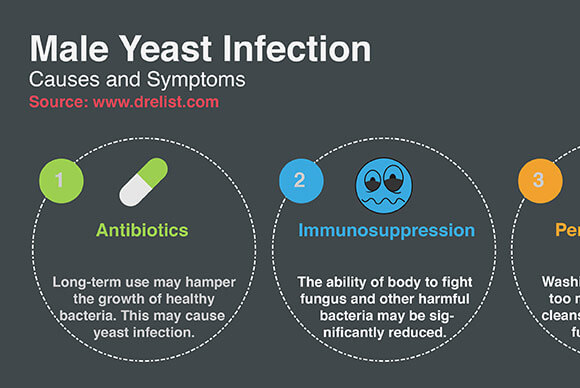Prioritizing Prostate Care Tips for Men’s Wellbeing
Understanding Prostate Health
The prostate gland, while small in size, plays a significant role in a man’s reproductive system. Situated just below the bladder and in front of the rectum, it surrounds the urethra, the tube that carries urine from the bladder. As men age, the prostate gland can undergo changes, leading to various health issues. Prioritizing prostate care is essential for maintaining overall wellbeing and preventing potential complications.
Know Your Risk Factors
One of the first steps in prioritizing prostate care is understanding the risk factors associated with prostate health. Age is a significant factor, as the risk of developing prostate issues increases with age, particularly after the age of 50. Family history also plays a role; men with a family history of prostate problems are at a higher risk. Additionally, ethnicity can influence risk, with African American men having a higher likelihood of developing prostate cancer compared to men of other ethnicities.
Regular Health Checkups
Regular health checkups are crucial for monitoring prostate health and detecting any potential issues early on. During these checkups, healthcare providers may perform a digital rectal exam (DRE) to assess the size and condition of the prostate gland. They may also recommend prostate-specific antigen (PSA) blood tests to screen for prostate cancer. Early detection is key to effective treatment and better outcomes.
Maintain a Healthy Lifestyle
A healthy lifestyle can significantly impact prostate health. Incorporating a balanced diet rich in fruits, vegetables, whole grains, and lean proteins can provide essential nutrients and antioxidants that support overall health, including prostate health. Regular exercise is also beneficial, as it helps maintain a healthy weight and reduces the risk of chronic conditions such as obesity and diabetes, which can impact prostate health.
Stay Hydrated
Proper hydration is essential for prostate health. Drinking an adequate amount of
Maximizing Men’s Fitness Effective Tips and Strategies
Introduction:
In the pursuit of fitness, men often seek effective tips and strategies to maximize their results. From building muscle to improving endurance, there are various approaches to enhancing men’s fitness. Here, we delve into some effective tips and strategies to help men optimize their fitness journey and achieve their goals.
Setting Clear Goals:
Before embarking on any fitness journey, it’s essential for men to establish clear and achievable goals. Whether it’s increasing muscle mass, improving cardiovascular health, or losing weight, having specific objectives provides direction and motivation. Set both short-term and long-term goals to track progress and stay focused on the desired outcomes.
Balanced Nutrition:
Nutrition plays a crucial role in men’s fitness, fueling workouts and supporting muscle growth and recovery. Aim for a balanced diet rich in lean proteins, complex carbohydrates, healthy fats, and plenty of fruits and vegetables. Prioritize whole, nutrient-dense foods while minimizing processed and sugary items. Adequate hydration is also key to optimal performance and overall health.
Strength Training:
Incorporating strength training into a fitness routine is essential for men looking to build muscle mass and increase strength. Focus on compound exercises that target multiple muscle groups, such as squats, deadlifts, bench presses, and pull-ups. Progressive overload, gradually increasing the weight or resistance over time, is key to stimulating muscle growth and adaptation.
Cardiovascular Exercise:
While strength training is important, cardiovascular exercise is also crucial for men’s overall fitness and health. Engage in activities such as running, cycling, swimming, or high-intensity interval training (HIIT) to improve cardiovascular endurance and burn calories. Aim for at least 150 minutes of moderate-intensity aerobic exercise or 75 minutes of vigorous-intensity exercise per week.
Recovery and Rest:
Rest and recovery are often overlooked but are essential components of a successful fitness regimen. Allow adequate time for rest between workouts to
Understanding Male Yeast Infection Causes and Treatments

Understanding Male Yeast Infection: Causes, Symptoms, and Treatment
What is Male Yeast Infection?
Male yeast infection, also known as candidiasis, is a fungal infection caused by the overgrowth of Candida albicans fungus. While often associated with women, men can also develop yeast infections, typically affecting the genitals.
Common Causes
Several factors can contribute to the development of male yeast infections. These include poor hygiene, weakened immune system, use of antibiotics, diabetes, sexual intercourse with an infected partner, and wearing tight, non-breathable clothing.
Signs and Symptoms
Male yeast infections can manifest in various ways, with symptoms including itching, redness, irritation, swelling, and a rash on the penis, scrotum, or groin area. Discomfort during urination or sexual intercourse may also occur.
Diagnosis and Evaluation
Diagnosing male yeast infection usually involves a physical examination by a healthcare professional. In some cases, a sample of the affected area may be collected for laboratory analysis to confirm the presence of Candida fungus.
Treatment Options
Treatment for male yeast infection typically involves antifungal medications, either in the form of topical creams or oral tablets. Over-the-counter antifungal creams can provide relief for mild infections, while more severe cases may require prescription-strength medications.
Home Remedies and Self-Care
In addition to medication, there are several self-care measures and home remedies that can help alleviate symptoms and promote healing. These include practicing good hygiene, wearing loose-fitting clothing, avoiding irritants, and maintaining a balanced diet.
Prevention Strategies
Preventing male yeast infections involves adopting healthy lifestyle habits and minimizing risk factors. This includes practicing good genital hygiene, avoiding douching and scented hygiene products, wearing breathable underwear, and managing underlying health conditions such as diabetes.
Impact on Sexual Health
Male yeast infections can impact sexual health and intimacy, causing discomfort and potentially transmitting the infection to sexual partners. Open communication with partners and


